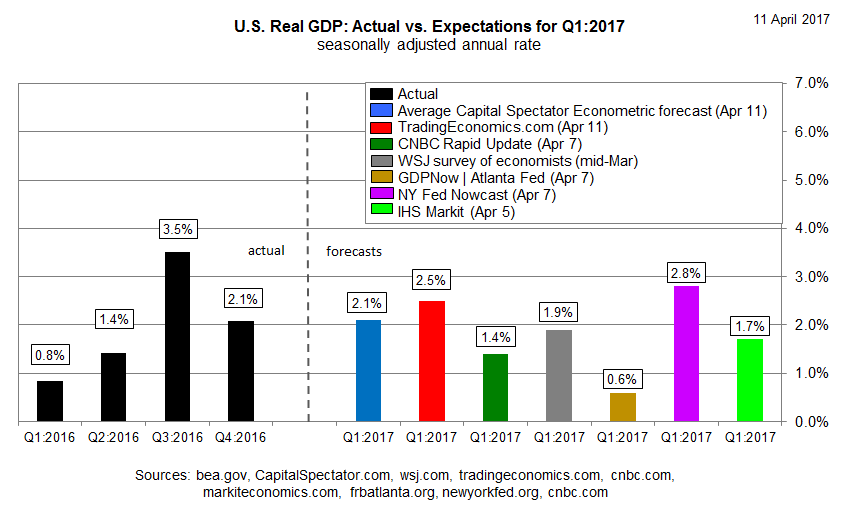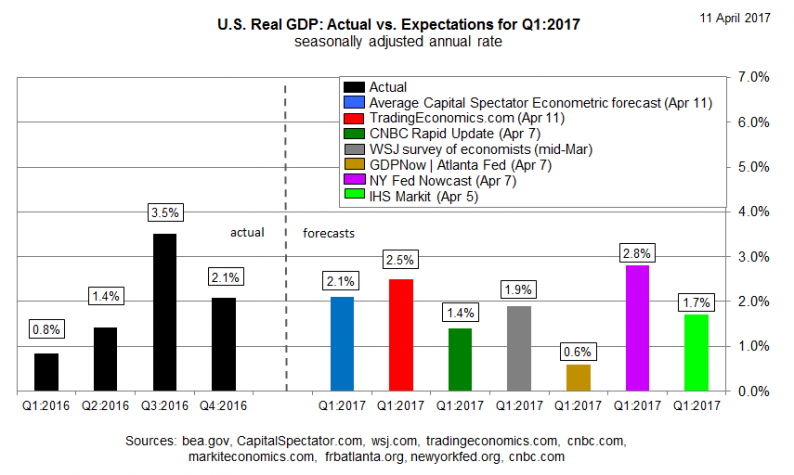Projections for US economic growth in the first quarter continue to present a varied outlook, ranging from a sharp slowdown to a modest improvement. But if this is a reason for the central bank to delay interest rate hikes, there was no sign of concern in Fed Chair Janet Yellen’s comments on Monday.
“Looking forward, I think the economy is going to continue to grow at a moderate pace,” Yellen said at the University of Michigan’s Ford School of Public Policy. “We think a gradual path of increases in short-term interest rates can get us to where we need to be, but we don’t want to wait too long to have that happen,” she advised.
No change in rates is expected for next month’s policy announcement, but the Fed funds futures market is currently pricing in a roughly 67% probability of lifting the target range at the June FOMC meeting, based on CME data as of Apr. 10.
One factor that may influence the Fed’s outlook for monetary policy in the near term is the government’s first Q1 GDP report that’s scheduled for release on Apr. 28. Current projections are still wide ranging. On the low end is last Friday’s revision of the Atlanta Fed’s GDPNow model, which is anticipating that output will decelerate to a weak 0.6% quarterly increase – well below the 2.1% rise in the previous quarter.
By contrast, the New York Fed’s model is projecting a moderately firmer advance of 2.8%.

Why such a big difference in the two Fed-bank estimates? “They use very different models,” Thomas Byrne of Wealth Strategies & Management said recently via Barron’s. “The NY Fed tends to have a more optimistic forecast, versus the Atlanta Fed.” He added that the average of the two projections tends to track the outlook via Wall Street economists.
Byrne’s rule of thumb resonates at the moment. CNBC’s Apr. 7 median survey of Wall Street’s expectations for Q1 growth is 1.4%, slightly below the 1.7% average of the two Fed bank estimates.













Leave A Comment